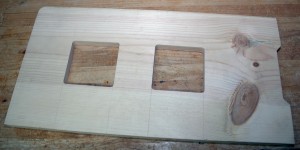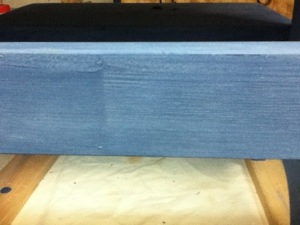
This partial pattern contains all the elements of the case sides without the bulk entailed by a full-sized pattern. It also allows the creation of sides of different heights.
Building the No. 367 is straightforward proposition. Dadoes capture the shelf ends and join the case together while the gallery back helps things square. I made a few modifications to the design, altering the depth from 12″ to 11.25″ to use 1″ x 12″ material, and narrowing the case from 30″ to 24″ since I thought it looked better. I also substituted a shiplapped back for the original’s panel. Having decided on a milk painted finish, I chose pine instead of the fumed white oak used in the original. Continue reading

